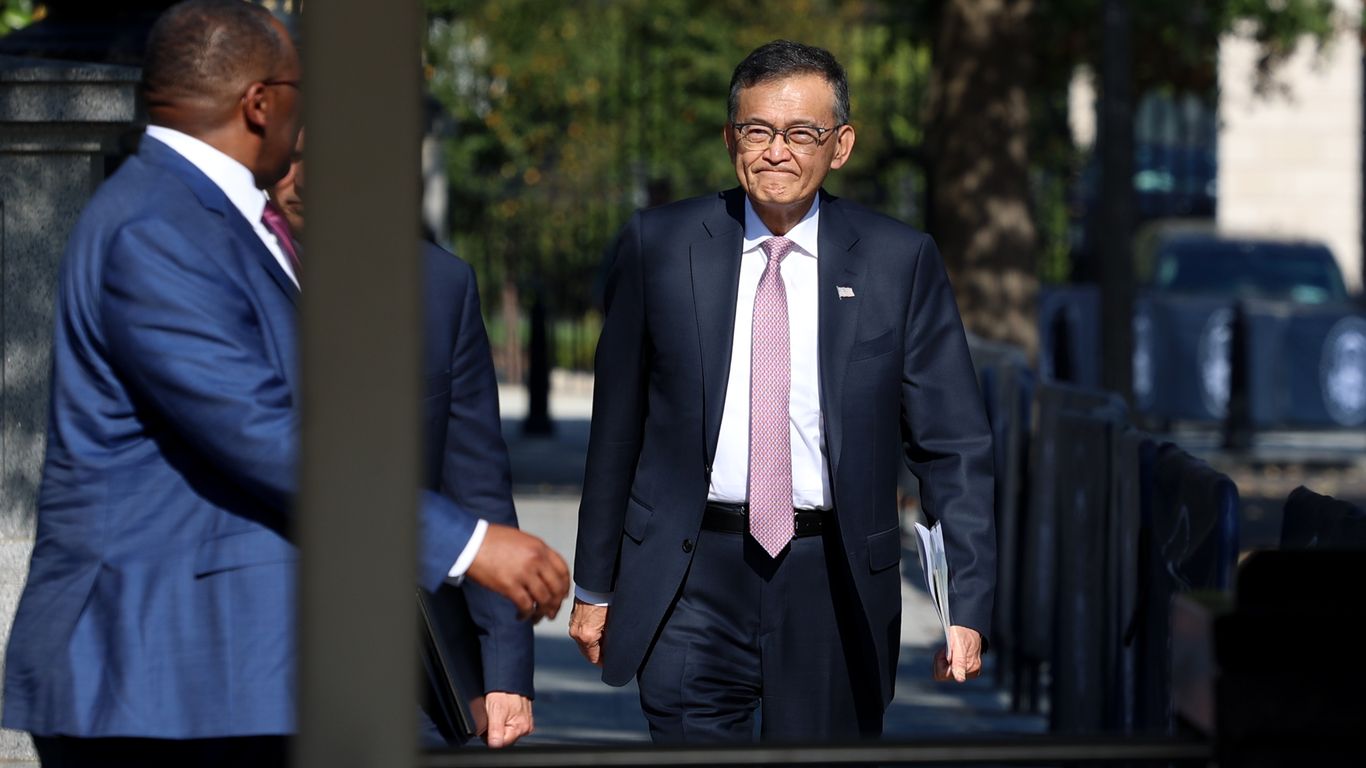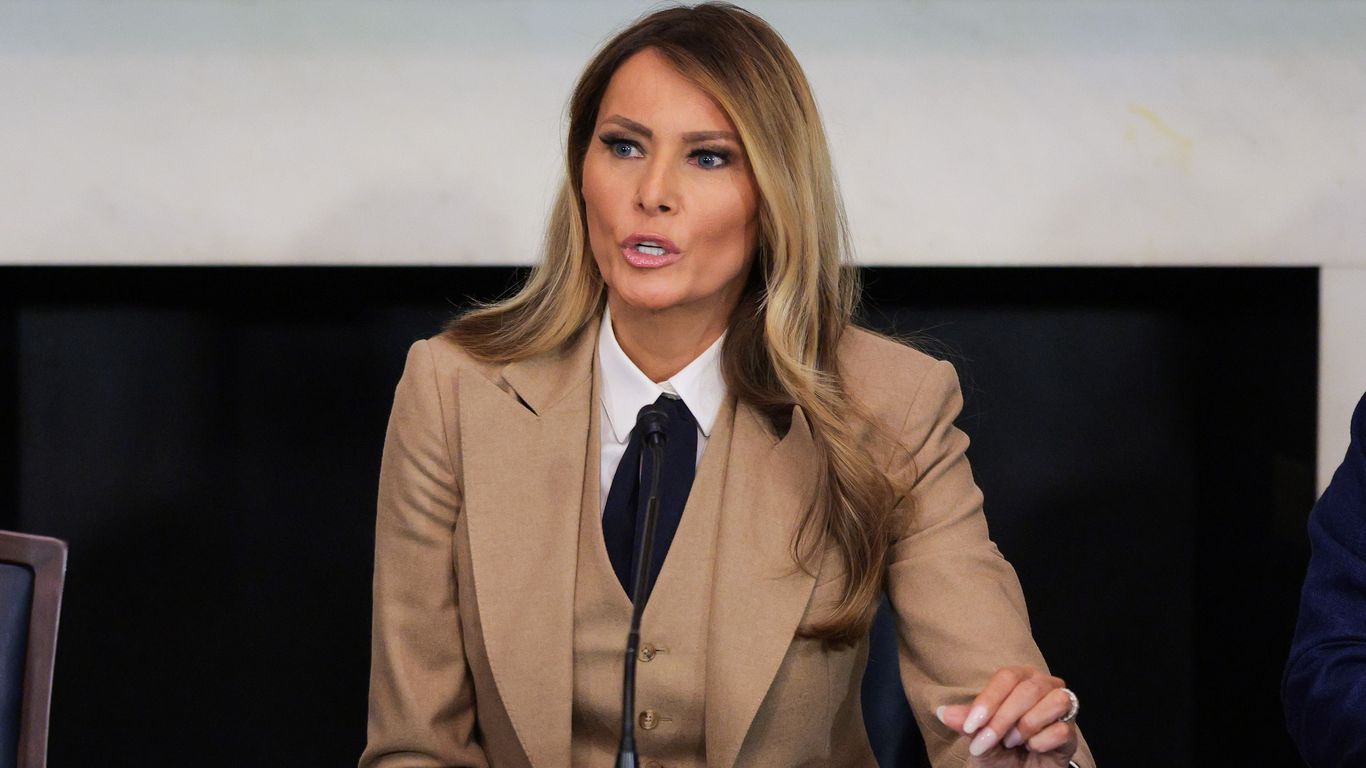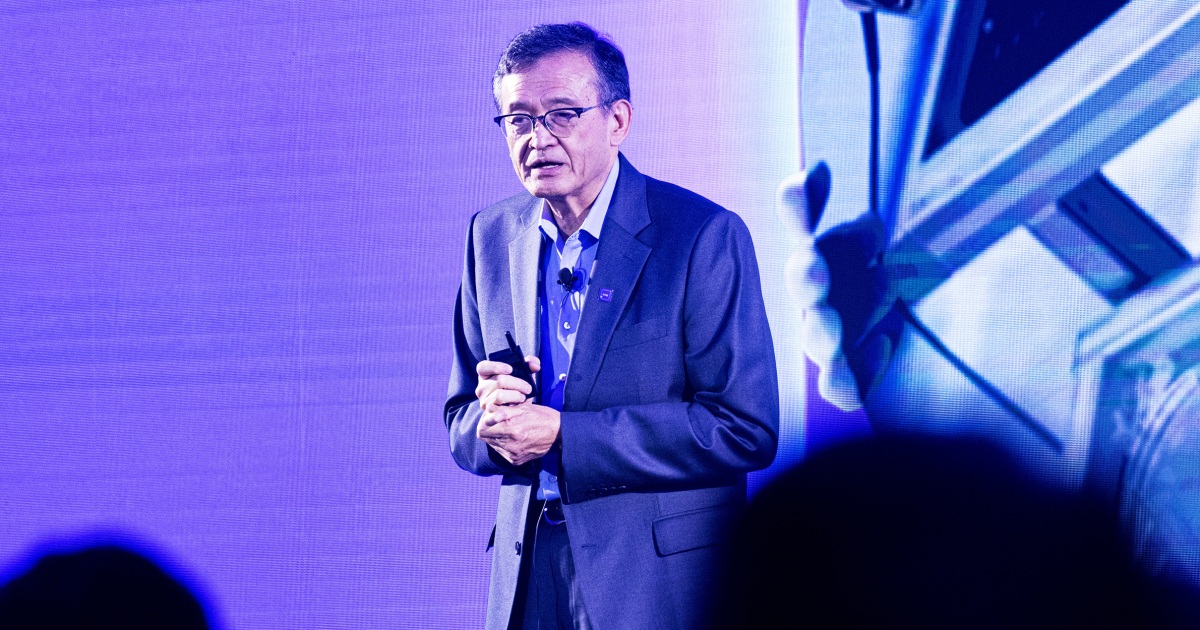Trump Administration Considering Stake in Intel

Introduction
The Trump administration is considering taking a stake in Intel Corp., according to sources familiar with the plan. This move is part of the White House's efforts to blur the lines between state and industry, as seen in previous actions such as the government's involvement in the TikTok and Huawei situations. The potential partnership with Intel is a reflection of the current administration's focus on domestic manufacturing and national security concerns.
Key Details
The talks between the Trump administration and Intel involve the US government acquiring a stake in the chipmaker. This would provide the government with a say in the company's decision-making and potentially access to its technology and resources. The move is also seen as a way to boost domestic production of semiconductors, which have become increasingly important in various industries. Additionally, the partnership could address concerns over supply chain vulnerabilities and national security risks.
Impact
If the talks are successful, this would mark another instance of the US government's involvement in the tech industry, a trend that has raised concerns about government overreach and the impact on free markets. It also highlights the administration's focus on boosting domestic manufacturing and addressing national security concerns. However, the move may also lead to backlash and potential challenges from other governments and industry players. It remains to be seen how this potential partnership will ultimately affect the chipmaker and the larger tech industry as a whole.
About the People Mentioned
Donald Trump
Donald John Trump, born June 14, 1946, in Queens, New York, is an American businessman, media personality, and politician. He graduated from the University of Pennsylvania’s Wharton School in 1968 with a degree in economics. In 1971, he took over his family’s real estate business, renaming it the Trump Organization, through which he expanded into building and managing skyscrapers, hotels, casinos, and golf courses. Trump gained widespread fame as the host of the reality TV show *The Apprentice* from 2004 to 2015, which helped establish his public persona as a successful entrepreneur. Trump entered politics as a Republican and was elected the 45th president of the United States, serving from 2017 to 2021. His presidency was marked by significant policy actions including tax cuts, deregulation, the appointment of three Supreme Court justices, renegotiation of trade agreements (notably replacing NAFTA with the USMCA), and a focus on immigration control including border wall expansion. He withdrew the U.S. from international agreements such as the Paris Climate Accord and the Iran nuclear deal, and engaged in a trade war with China. His administration’s response to the COVID-19 pandemic was criticized for downplaying the virus’s severity. Trump was impeached twice by the House of Representatives—first in 2019 for abuse of power and obstruction, and again in 2021 for incitement of insurrection—but was acquitted by the Senate both times. After losing the 2020 election to Joe Biden, Trump challenged the results, culminating in the January 6, 2021, Capitol riot. He remains a central figure in American politics, having won the 2024 presidential election and returned as the 47th president in 2025, continuing to promote policies aimed at economic growth, border security, and military strength[1][2][3][4].
About the Organizations Mentioned
Intel
Intel Corporation is a leading American multinational technology company specializing in the design and manufacture of advanced semiconductors that power computing devices globally. Founded in 1968, Intel pioneered the development of microprocessors, becoming the dominant supplier of x86-based processors for PCs, servers, and other computing platforms. The company is known for its continuous innovation in semiconductor technology and its role in shaping the modern computing landscape. Intel's recent technological advancements include the launch of the Intel® Core™ Ultra series 3 processors (code-named Panther Lake) and Intel® Xeon® 6+ processors (Clearwater Forest), both built on the cutting-edge Intel 18A semiconductor node—currently the most advanced manufacturing node in the United States. These products are manufactured at Intel’s state-of-the-art Fab 52 facility in Chandler, Arizona, showcasing Intel's commitment to domestic production and technological leadership[1]. In the face of intense competition from rivals such as AMD and the architectural shifts exemplified by Apple’s move to its own silicon, Intel has been undergoing significant restructuring. This includes workforce reductions by approximately 15%, aiming to streamline operations, improve efficiency, and focus on core growth areas like AI and data centers. Financially, Intel reported solid demand and revenue resilience, with Q2 2025 revenue reaching $12.9 billion, exceeding guidance despite challenges from one-time costs and impairments[3][5]. The company is also enhancing its foundry business and AI roadmap to strengthen its competitive position and long-term shareholder value[3]. Intel’s strategic partnerships, including a $5 billion investment by Nvidia to jointly develop CPUs, and talks of adding AMD as a foundry customer, highlight its adaptive approach to industry dynamics[6]. Despite recent challenges and market shifts, Intel remains a crucial player in the semiconductor industry, advancing AI-enabled platforms and maintaining a significant impact on the global technology ecosystem[1][6].
TikTok
**TikTok** is a global social media platform specializing in short-form videos, owned by the Chinese company ByteDance. It allows users to create and share videos ranging from a few seconds to an hour, leveraging advanced recommendation algorithms to connect creators with vast audiences, making it a leading driver of viral trends in culture, music, fashion, and commerce[6][2]. The platform originated from **Douyin**, launched in China in September 2016, which quickly amassed 100 million users within a year. TikTok was introduced as the international counterpart, operating independently but sharing a similar interface and features[6]. Since then, TikTok has experienced explosive growth, surpassing 1.6 billion monthly active users globally by 2025, ranking as the fifth most-used social platform worldwide. Its U.S. user base alone exceeds 136 million, with users spending an average of 58 minutes daily on the app, opening it over 15 times per day—outpacing competitors[3][5][2]. TikTok's business model is heavily based on advertising, which accounted for 70% of its $25 billion revenue in 2025. Its e-commerce arm, TikTok Shop, generated $30 billion in gross merchandise value, doubling from the previous year, with American users spending about $1,200 annually on in-app purchases[2][3]. The platform continuously innovates with AI-powered tools enabling creative content like AI filters and educational clips, fueling engagement and brand interaction[2][4]. Despite its success, TikTok faces challenges including scrutiny over data privacy, misinformation, and content moderation. Some countries have banned or restricted its use on government devices due to security concerns[6]. Nevertheless, TikTok remains a dominant force in social media and digital marketing, evolving into a comprehensive growth partner for brands by integrating AI, creative advertising solutions, and deep audience analytics to drive full-funnel business impact[4][1].
Huawei
Huawei Technologies Co., Ltd. is a Chinese multinational technology company headquartered in Shenzhen, Guangdong, and one of the world’s leading providers of telecommunications equipment and consumer electronics[1]. Founded in 1987 by Ren Zhengfei, a former People’s Liberation Army officer, Huawei began as a modest manufacturer of phone switches before rapidly expanding into a global powerhouse with operations in over 170 countries and regions, serving more than three billion people worldwide[1][8]. Today, Huawei’s main business lines include telecommunications infrastructure, smartphones and consumer devices, electric vehicle autonomous driving systems, and rooftop solar power products[1]. ## Key Achievements and Innovations Huawei’s rise to prominence was marked by its 2012 overtaking of Ericsson as the world’s largest telecommunications equipment manufacturer[1]. The company became a top-three global smartphone vendor, with annual shipments exceeding 200 million units at its peak[4]. Huawei has been a pioneer in 5G technology, launching end-to-end solutions based on 3GPP standards, and has developed its own AI chips (Ascend series) and smartphone processors (Kirin series)[4]. In a notable display of technological resilience, Huawei launched the Mate 60 Pro 5G smartphone in 2023 using advanced Chinese-made chips, and followed up with HarmonyOS Next, a fully in-house operating system, in late 2024[3]. These moves demonstrated Huawei’s capacity to innovate despite stringent U.S. sanctions aimed at curtailing China’s access to advanced semiconductor technology[3]. ## Current Status and Strategy As of 2025, Huawei is the largest smartphone vendor in China, holding an 18.1% market share, even as overall smartphone demand in the country has softened[1][5]. The company’s revenue grew 4% year-on-year in the first half of 2025, although net profit fell by 32%, partly due to increased R&D







